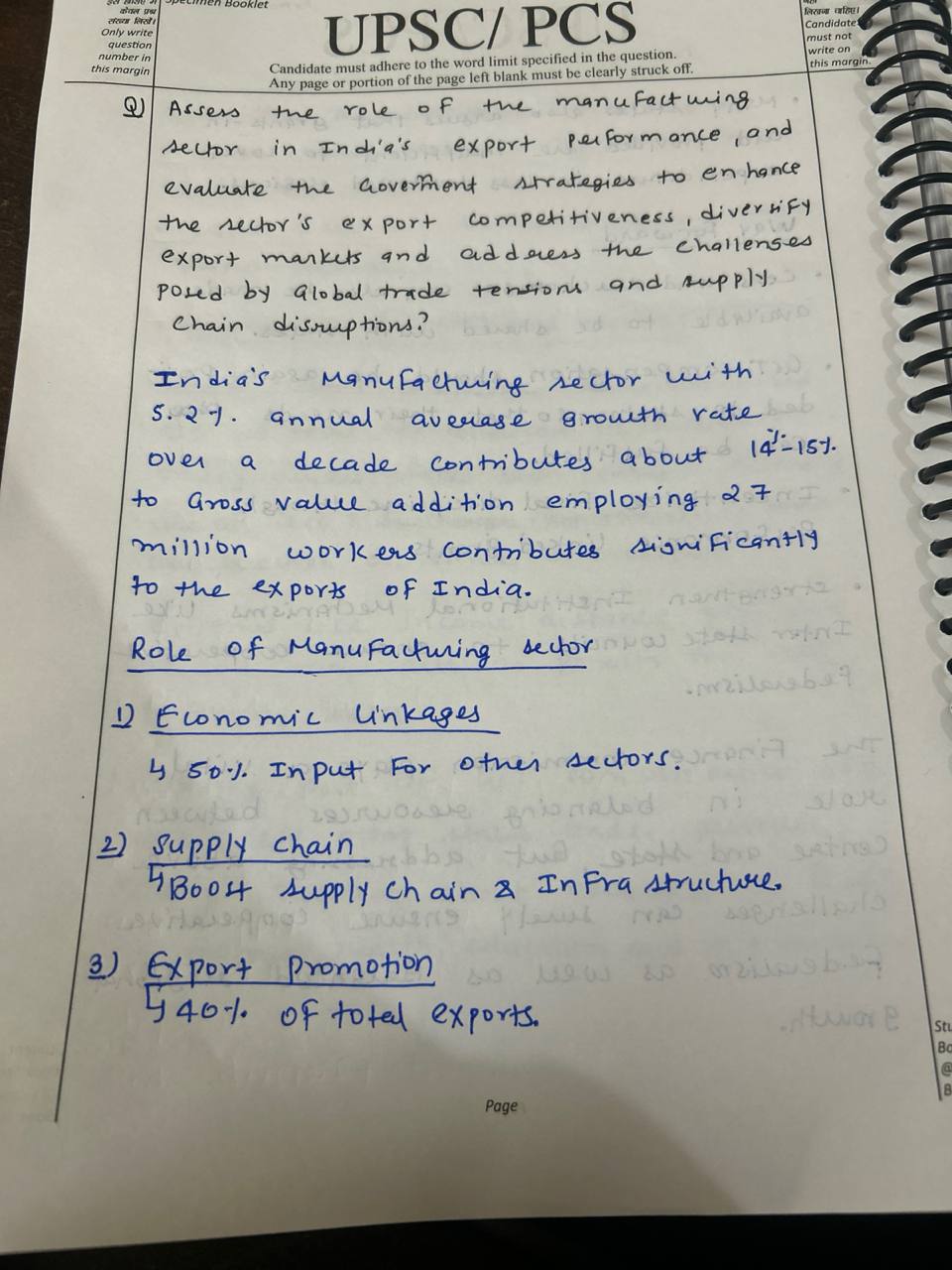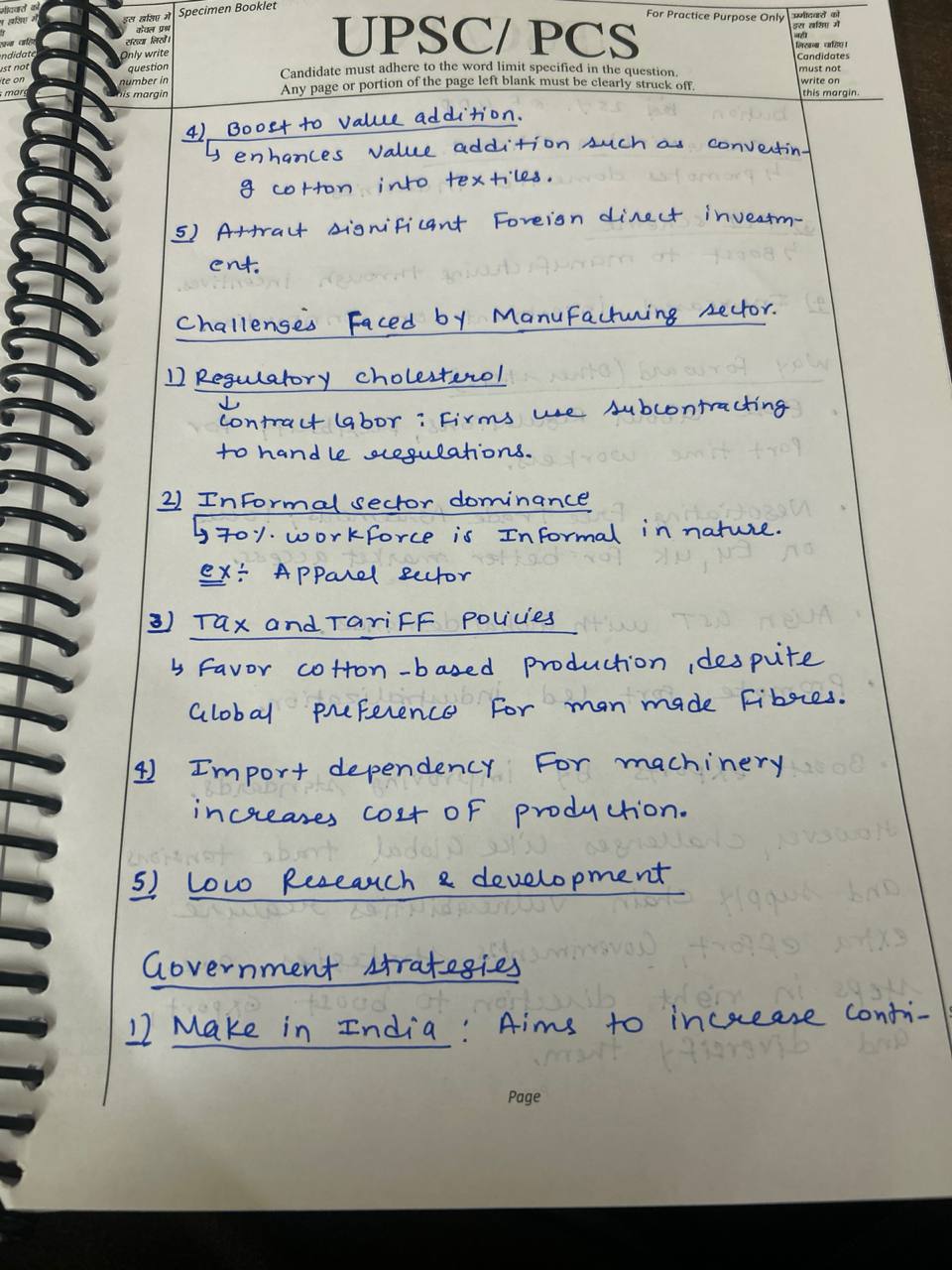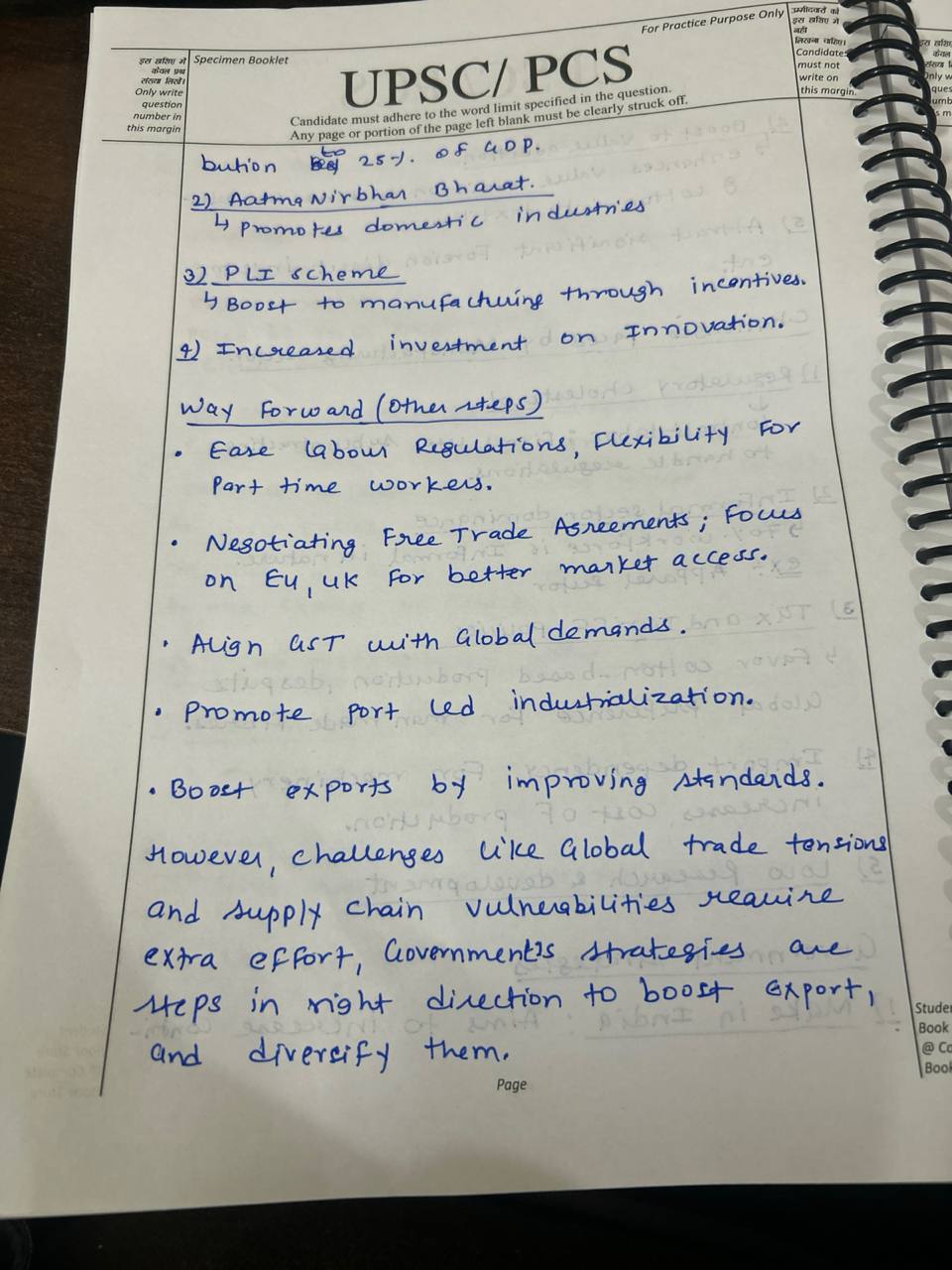Describe the Design Linked Incentive (DLI) program. Talk about how this plan might affect India’s semiconductor manufacturing sector. (Answer in 200 words)
Impact of the Government's "Make in India" Initiative on the Manufacturing Sector Introduction Launched in September 2014, the "Make in India" initiative aims to transform India into a global manufacturing hub by encouraging domestic and foreign companies to invest in the country. This initiative foRead more
Impact of the Government’s “Make in India” Initiative on the Manufacturing Sector
Introduction
Launched in September 2014, the “Make in India” initiative aims to transform India into a global manufacturing hub by encouraging domestic and foreign companies to invest in the country. This initiative focuses on boosting the manufacturing sector’s performance, contributing to GDP growth, generating employment, and integrating Indian manufacturing into global value chains. This evaluation examines these impacts with recent examples.
Contribution to GDP Growth
Increased Manufacturing Output: The “Make in India” initiative has led to a notable increase in manufacturing output. The sector’s contribution to India’s GDP rose from approximately 16% in 2014 to 18% in 2021. The emphasis on improving infrastructure, simplifying regulations, and enhancing the ease of doing business has facilitated this growth. For example, the electronics manufacturing sector has seen substantial growth, with companies like Samsung and Apple expanding their production in India.
Industrial Production Growth: The initiative has spurred growth in industrial production, evident from the increase in the Index of Industrial Production (IIP). The Production Linked Incentive (PLI) Scheme, introduced as part of the initiative, has significantly boosted production in sectors like automobiles, textiles, and electronics, contributing to higher industrial output.
Employment Generation
Job Creation: The “Make in India” initiative has contributed to significant job creation across various manufacturing sectors. The expansion of industries like automobiles, pharmaceuticals, and textiles has created millions of jobs. For instance, Hero MotoCorp and Maruti Suzuki have expanded their manufacturing facilities, creating thousands of jobs in the automotive sector.
Skill Development: The initiative also emphasizes skill development through programs like the Skill India Mission. This has led to the creation of skilled labor pools for the manufacturing sector. For example, Tata Motors has collaborated with educational institutions to enhance the skills of its workforce, aligning with industry needs.
Integration into Global Value Chains
Increased Foreign Direct Investment (FDI): The “Make in India” initiative has attracted substantial FDI, integrating Indian manufacturing into global value chains. Electronics and automobiles are prime examples, with significant investments from companies like Foxconn and Tesla. These investments have enhanced India’s role in global supply chains and manufacturing networks.
Export Growth: The initiative has facilitated the growth of exports from the manufacturing sector. The PLI Scheme has contributed to increased exports in sectors such as textiles and pharmaceuticals. For example, India’s pharmaceutical exports grew significantly, with companies like Dr. Reddy’s Laboratories increasing their global market presence.
Supply Chain Diversification: The Make in India initiative has encouraged companies to diversify their supply chains by setting up or expanding production facilities in India. General Electric and Siemens have established manufacturing plants in India to serve both domestic and international markets, integrating Indian manufacturing into their global supply networks.
Government Strategies to Address Emerging Challenges
Infrastructure Development: The government has invested in improving infrastructure to support manufacturing growth. Initiatives such as the Dedicated Freight Corridors (DFCs) and industrial corridors are aimed at reducing logistics costs and improving supply chain efficiency.
Policy Reforms: To address regulatory challenges, the government has implemented policy reforms such as the Goods and Services Tax (GST) and the National Single Window System. These reforms aim to simplify business operations and enhance the ease of doing business in India.
Support for MSMEs: The government has introduced measures to support Micro, Small, and Medium Enterprises (MSMEs), which play a crucial role in the manufacturing sector. The MSME Support and Outreach Program provides financial assistance, technical support, and market access to MSMEs, promoting their growth and integration into global value chains.
Innovation and R&D: The government has promoted innovation and research & development (R&D) through schemes like the Atal Innovation Mission and the National Research Development Corporation (NRDC). These initiatives support technological advancements and help manufacturing firms stay competitive in the global market.
Conclusion
The “Make in India” initiative has positively impacted the manufacturing sector by boosting GDP growth, generating employment, and integrating Indian manufacturing into global value chains. The increase in manufacturing output, job creation, and foreign investment highlights the initiative’s success in transforming India into a global manufacturing hub. However, addressing challenges related to infrastructure, regulatory frameworks, and support for MSMEs is crucial for sustaining and enhancing these gains. Continued focus on innovation and global competitiveness will be key to furthering the initiative’s objectives and ensuring long-term growth in the manufacturing sector.
See less



The Ministry of Electronics and Information Technology has announced the Design Linked Incentive (DLI) Scheme to offset the disabilities in the domestic industry involved in semiconductor design in order to not only move up in value-chain but also strengthen the semiconductor chip design ecosystem iRead more
The Ministry of Electronics and Information Technology has announced the Design Linked Incentive (DLI) Scheme to offset the disabilities in the domestic industry involved in semiconductor design in order to not only move up in value-chain but also strengthen the semiconductor chip design ecosystem in the country.
It aims to offer financial incentives as well as design infrastructure support across various stages of development and deployment of semiconductor design(s) for Integrated Circuits (ICs), Chipsets, System on Chips (SoCs), Systems & IP Cores and semiconductor linked design(s) over a period of 5 years.
This scheme can create a difference in the semiconductor manufacturing industry in India in the following ways:
Considering these contributions, this scheme would add to economic strength and contribute towards the creation of a US$1 trillion digital economy with a multiplier effect to achieve a US$5 trillion economy by 2025 provided certain challenges such as rapid changes in technology, high competition, specialisation and expertise, threats to supply chain etc. are addressed. Thus, there is a need to promote research, strengthen the supply chain, improve the patent ecosystem, etc, to realise the true potential of the scheme. The DLI scheme along with the Production-Linked Incentive (PLI) scheme have a crucial role in shaping India as an efficient, equitable, and resilient design and manufacturing hub.
See less